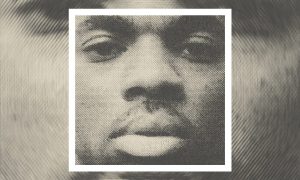If you are unaware — and I was until a stroke of luck brought it my way this year — Death Note is a one of a kind, one-season episodic animated series worth your time and attention. Y’know, if you like things that are good.
To classify the show as an anime would be misleading as it often has more in common with shows like Sherlock and American cop/detective shows like CSI or Criminal Minds than it does with Gundam Wing or Cowboy Beebop.
Damn, I’m getting old.
It is, in fact, an animated series from Japan featuring a young boy who ends up with magical abilities — main character Light Yagami finds a powerful notebook by happenstance that allows him to kill whomever he wishes simply by writing the person’s name in the book while having their face in mind — but that is where the similarities between Death Note and most anime, at least in terms of storytelling, end.
The spectacular artwork and direction is distinctly Eastern and draws heavily from the manga upon which the show is based, but it would be a disservice to paint such a nuanced, complex, and finely tuned piece of artwork with anything resembling broad strokes.
You will find the show in the anime section on your Netflix, but genre classifications in general tend to be reductive and Death Note makes a habit of shucking conventions from a multitude of them.
I discovered this gem via a Netflix recommendation which has led down many a shallow and empty well. Much like Light, however, a totally random set of circumstances took me down a rabbit hole from whence there was no return.
And I loved every single minute of it.
Because the plot is so purposefully paced and integral to the enjoyment of the show, I will avoid giving a full review in favor of describing three aspects of the show that work particularly well; it’s unique pacing, visual storytelling, and the stellar dynamic between the show’s two main characters.
Unique pacing
As I mentioned above, Death Note is not an action adventure show and in fact the bulk of screen time is spent watching characters hold lengthy conversation dripping with deductive reasoning and logic puzzles.
As my dad always said, “It’s a whodunnit?”
The difference is, from the very beginning, the audience knows exactly who “dunnit” and so scenes and plot-lines that would otherwise be drawn out for several episodes, or even entire seasons in order to keep the audience in the dark, are blown through in a matter of scenes in Death Note.
This ever-present dramatic irony allows the show to dodge conventions of mystery dramas and allow for all the characters involved to be catalysts that move the plot forward. The question is not, “what happened here” but can person X figure it out before person Y covers it up. The game of cat-and-mouse is relentless and the audience is never quite sure who is the cat and who the mouse.
One person lays a trap for another in one scene and it is sprung/avoided/discovered in the next.
Somehow, everyone in the show is always one step ahead of everyone else, and it is magnificent to watch unfold. All this combines to give it constant forward momentum.
Also, the fact that the show exists for one season, and one season only (37 episodes) as a planned project with a beginning, middle, and end means that it avoids dragging out story-lines or overplaying it’s cards.
It doesn’t have time to wait around and develop less interesting side stories as time filler and potential material for later seasons to draw upon. Every scene in Death Note serves a purpose toward telling it’s contained story.
The summation of these parts amounts to a show that is paced unlike any I’ve watched before. It could be described as a psychological thriller, but you won’t see many chase scenes or gun fights. Instead, the show just constantly pushes forward, things escalate exponentially in the only direction that makes any sense.
There is a mystical element (Gods of Death do exist) that allows them to fudge a few plot points, but overall, the show’s decision to aim for intelligence as the most important weapon in the battle creates a solid foundation whereupon the viewer can actively engage in each step of the process, almost always having just as much information as the characters on screen.
Whereas most crime solving mystery dramas build great details into individual cases solved at the end of each episode, Death Note is like watching ten mini-episodes of Sherlock where a hundred little cases are solved and revealed all in pursuit of answering the big question; who is responsible for these mysterious murders and how is he doing it?
For Light; can he complete his vision?
Visual storytelling
It can be difficult to describe what is so visually striking about Death Note. Part of it is the subtle way in which it bends from hyper-realistic to highly impressionistic in order to match the mood.
There are scenes of the show that are as dark, grungy, and monotonous (purposefully) as The Crow and moments that are vivid and bright, brimming with reds and greens like a Hayao Miyazaki film.
Of course, it remains distinctly it’s own look, but that should give some idea of the range of artistry going on here.
Because so much of the show is devoid of what one might call “action” the artwork must hold the viewers attention, and if you hang on long enough to get into the middle episodes, there will sure to be a few moments that take away breath and force the skipping of heart beats.
It is amazing the tension that can be created by the perfect angle coupled with an excellent musical score that will stick with you after the show has long ended.
There are images etched in my mind from this show that I will never forget, unlike anything I’ve seen before or since.
“L” vs. Light psychodrama
If you enjoy characters like Sherlock Holmes, Dr. Who, Dr. House, Castle, or Monk, I’d like to introduce you to the detective simply known as “L”.
“L” has quickly become my favorite version of this character archetype; the quirky genius savant. There is a sense of anticipation for every moment he is on screen. He is the heartbeat of the show.
Voiced by Alessandro Juliani, known to Batllestar Gallactica fans as Mr. Gaeta, “L” is the super detective assigned to the case of the person known as “Kira” which is derived from a Japanese pronunciation of the English word “killer.”
His lines are delivered with such subtle drive that you can hear the character thinking. In order for the show to be successful — in fact, even more than that, in order for the show to be anything less than an unmitigated disaster — “L” and Light have to be engaging enough to spend large swaths of time doing little more than hearing them think aloud … or sometimes not so aloud.
The engaging artwork can walk you to the river, but the dialogue is the thirst-quenching drink I never knew I was craving.
Brad Swaile, who portrays Light Yagami, is similarly fantastic and the show simply wouldn’t be what it is if these two parts weren’t handled perfectly. There are a few times when you aren’t sure who is the protagonist and who the antagonist, and that is awesome.
The term that best fits Death Note is psychodrama. It is a thinking persons show filled with brilliant people. Because our killer doesn’t operate with weapons or force, his ability to commit and execute killings hinges entirely upon an ability to out-wit law enforcement; most specifically, a genius detective whose real name and face he does not know.
For a show called Death Note, there is little to no gore or scenes of graphic (or really any other kind) of violence. The horrifying nature of the deaths themselves always take a back seat to the sparring match of intellect and evidence. Two young men, and plenty of important role players, all working on a massive puzzle from different angles and the audience always knows more than the characters.
The fun comes not from trying to figure it out but from wondering when the characters will figure things out … and more importantly how. The near-misses can be more intense than the hits.
The brilliant script work and voice acting makes that much more entertaining in practice than I just made it sound.
I don’t want the ruin the ride so I will simply conclude thusly; I will defend The Newsroom until long after I’m blue in the face and I have two pets named after characters from Game of Thrones, but Death Note was easily the single best viewing experience I had in 2014.


















